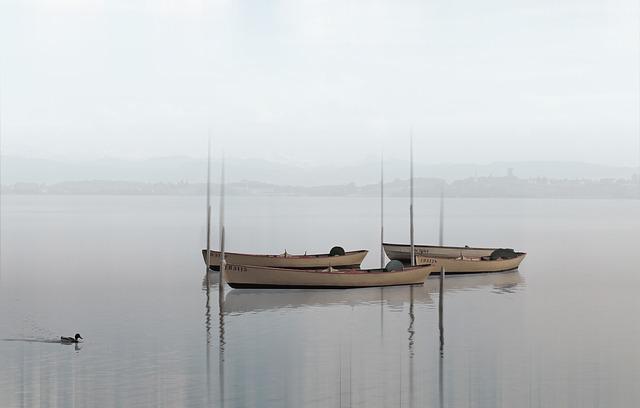The most essential yet frequently underrated pieces of fishing gear are fishing leaders. Leaders make it harder to see in the water and can save you from a broken line.
A successful fishing trip can be distinguished from one that ends in failure by knowing what is a fishing leader and how to attach one.
Table of Contents
What Does A Leader Do In Fishing?
I don’t want to make any assumptions, so let’s start with the fundamentals even though you might already be aware of this. The leader line is a segment of the line that you tie to your hook or lure and attach to your mainline with a knot or swivel.
The leader line’s purpose is to present a lure or bait naturally. Underwater invisibility is the best way for a leader line to accomplish this. The lure won’t look as natural and the fish will be less likely to bite it if it detects the leader or mainlines.
Leader lines can also absorb the torque or impact on the mainline or knots by having a little stretch to them. These leaders are often called shock leaders as they absorb some of the shock or impact created by a fighting fish. It can significantly lower the possibility of a fish snagging the line or a knot coming undone by absorbing this impact.
Another purpose of the leader line is to get the bait to the correct depths. According to the type of leader being used, lines can sink or float. When you are fishing, you should have an idea of where you want your bait to be in the water column. It’s crucial to understand how your leader line can aid in depth.
Different Types Of Fishing Leaders
There are various types of fishing leaders available, and the one you use will depend on a number of variables. The most popular types are these.
Standard Monofilament Leader
A single strand of the robust, thinly spun line makes up a standard monofilament leader. Standard monofilament leaders typically have properties like water absorption, abrasion resistance, some stretch, and solar absorption.
Standard monofilament leaders are reasonably priced. They are also flexible, making it simple to work with them when tying different knots. They offer excellent abrasion resistance and, thanks to a slight stretch, they can be slightly impacted by aggressive fish.
There are some drawbacks to these leaders to be aware of. They degrade over time when exposed to UV light because they absorb sunlight. To feel smaller bites can be difficult due to their ability to stretch.
Wire Fishing Leader
There are many different sizes and lengths of single-strand, multi-strand, and knottable wire fishing leaders. Compared to other types of leaders, wire leaders are less transparent, but they are more robust when attempting to snag large fish with razor-sharp teeth.
Fluorocarbon Monofilament Leader
Monofilament is also used in fluorocarbon leaders, but due to some important variations, these leaders are more expensive. These leaders have less stretch and are less porous, making them even less visible to fish.
Because fluorocarbon leaders don’t stretch much, it’s simpler to detect smaller bites. These leaders offer excellent knot strength and are even more abrasion-resistant. Fluorocarbon leaders are resistant to UV deterioration and do not absorb water.

Fluorocarbon leaders have only a small price premium and a propensity to sink in water as real drawbacks.
What Time Do I Need A Leader?
The quick response is that using a fishing leader is always a good idea. The majority of the time that they are fishing, the most successful anglers will use one.
The best course of action would be to employ a fishing leader any time you feel the need to fortify or protect your primary fishing line. In very clear water, using a fishing leader will also improve the presentation of your bait.
Why Use A Leader Line When Fishing?
A better bait presentation when fishing is made possible by the fishing leader line, which is made to guard your primary fishing line against damage, line twist, and breaking.
A solid leader facilitates a smooth fly hook-set and helps to ensure that the fish does not see your fly line while it consumes your bait. When using an ultralight reel for fishing, a leader is necessary to prevent breakage of the light line.
It’s equally important to use the correct diameter leader based on the size of your line if you fish with a spinning rod or a baitcasting setup.
Ways On How To Make A Leader
It’s not particularly difficult to make fishing leaders, and no special tools are needed. Practice will be all that is needed.
To become a leader, you will require the following:
- Main Fishing Line
- Lure or Hook
- Swivel
- Leader line
- Fishing Weight or Sinker
- Pliers, Scissors, nail clippers, or Knife
How Do You Pick A Fishing Leader Line?
When selecting the ideal leader for fly fishing, three factors must be taken into account.
- First is the length of your desired line-up;
- The second will be determined by how big or small you want to make it appear in relation to other elements, such as weight, color, and so on.,
- Lastly, determining whether this person’s personality fits what I’ve been looking for thus far!
What Distinguishes A Fishing Line From A Leader Line?
By making your bait or lure appear larger, a leader line, which is attached to your main fishing line, helps present your catch.
When you need to connect two things, leaders are a great resource. Leaders come in all shapes and sizes, so they must be capable of handling any circumstance!
Additionally, it guards against damage from fish teeth, snags, plants, and rocks to your main line of fishing.
Must Leaders Be More Powerful Than The Main Line?
Any line’s leader needs to be strong enough if you want to increase the effectiveness of your saltwater fishing.
If it were lighter or thinner, it would be less visible to fish when they approached it and less likely to be bitten by its saber-toothed jaws.
In most cases, your leader line will break before your main fishing line because it is stronger. Large or strong fish, however, have the potential to put a lot of strain on the line and cause it to break.
Additionally, you should keep the mainline spooled up with a lot of backing if you’re fishing for muskies or stripers, which can put a lot of tension on your line.
Conclusion
A leader is a length of line that is attached to the main line on a reel on one end and the eye of a lure or hook on the other. The two lines are typically joined together by tying a knot around the two pieces or by attaching one line to each end of a swivel.
Fly fishing requires the use of a leader line because the heavy-colored fly line used to cast lightweight flies is too thick for tying on the small flies and is easily spotted by fish. Fish find the line more challenging by adding a monofilament or fluorocarbon leader followed by a tippet (a thinner piece of line) at the end of the fly fishing setup. When fly fishing for trout, my standard leader length is 9 feet and is made of a 2- or 4-pound fluorocarbon line.


